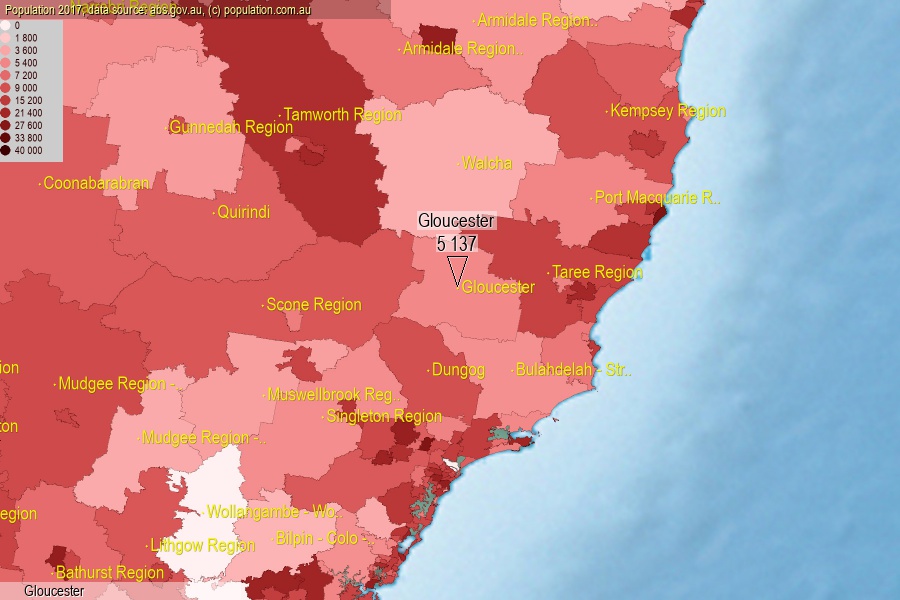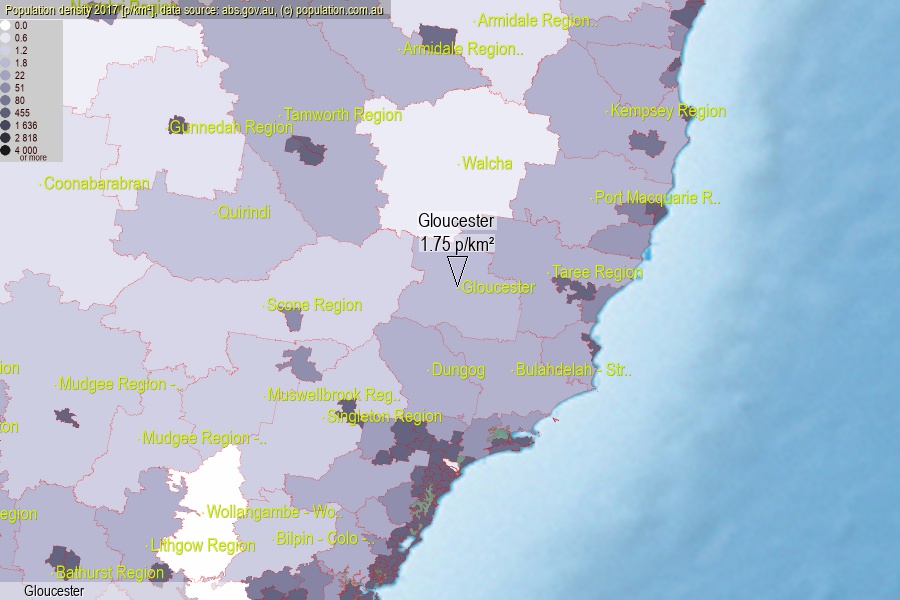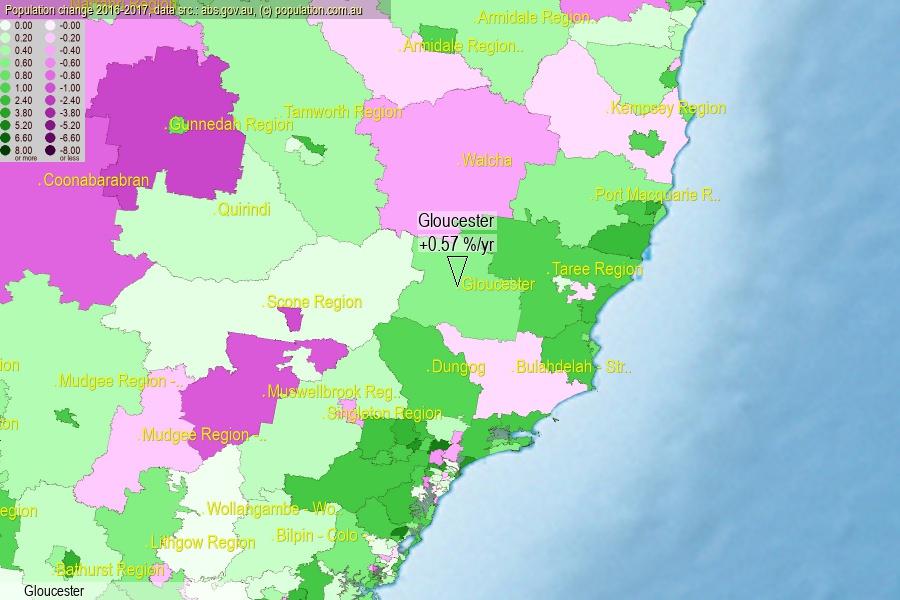 population.com.au
population.com.auLast official estimated population of Gloucester (as Statistical Area Level 2) was 5 137 people (on 2017-06-30)[2]. This was 0.02% of total Australian population and 0.065% of NSW population. Area of Gloucester is 2 933.90 km², in this year population density was 1.75 p/km² . If population growth rate would be same as in period 2016-2017 (+0.57%/yr), Gloucester population in 2025 would be 5 375. [0]



Click to enlarge. Gloucester is located in the center of the images.
Population [people], population density [p./km²] and population change [%/year] [2]
View borders » (new window) [4]
[1991-1992] +1.26 %/Yr.
[1992-1993] +1.43 %/Yr.
[1993-1994] +1.12 %/Yr.
[1994-1995] -0.60 %/Yr.
[1995-1996] +0.45 %/Yr.
[1996-1997] +0.42 %/Yr.
[1997-1998] -0.06 %/Yr.
[1998-1999] -0.34 %/Yr.
[1999-2000] -0.83 %/Yr.
[2000-2001] -0.51 %/Yr.
[2001-2002] +0.08 %/Yr.
[2002-2003] -0.53 %/Yr.
[2003-2004] -0.33 %/Yr.
[2004-2005] +0.16 %/Yr.
[2005-2006] +0.43 %/Yr.
[2006-2007] -0.57 %/Yr.
[2007-2008] -0.12 %/Yr.
[2008-2009] +0.60 %/Yr.
[2009-2010] +1.13 %/Yr.
[2010-2011] +1.26 %/Yr.
[2011-2012] +0.14 %/Yr.
[2012-2013] +0.56 %/Yr.
[2013-2014] +0.66 %/Yr.
[2014-2015] +0.49 %/Yr.
[2015-2016] +0.47 %/Yr.
[2016-2017] +0.57 %/Yr.
[0] Calculated with linear interpolation from officially estimated population
[1] Read more about SA2 and Australian Statistical Geography Standard (ASGS) on abs.gov.au
[2] Population data from Australian Bureau of Statistics (Population and density: 2017; change: 2016-2017)
[3] Digital Boundaries: Australian Statistical Geography Standard (ASGS) 2016.
[4] Border coordinates are simplifyed using Ramer-Douglas-Peucker algorithm.